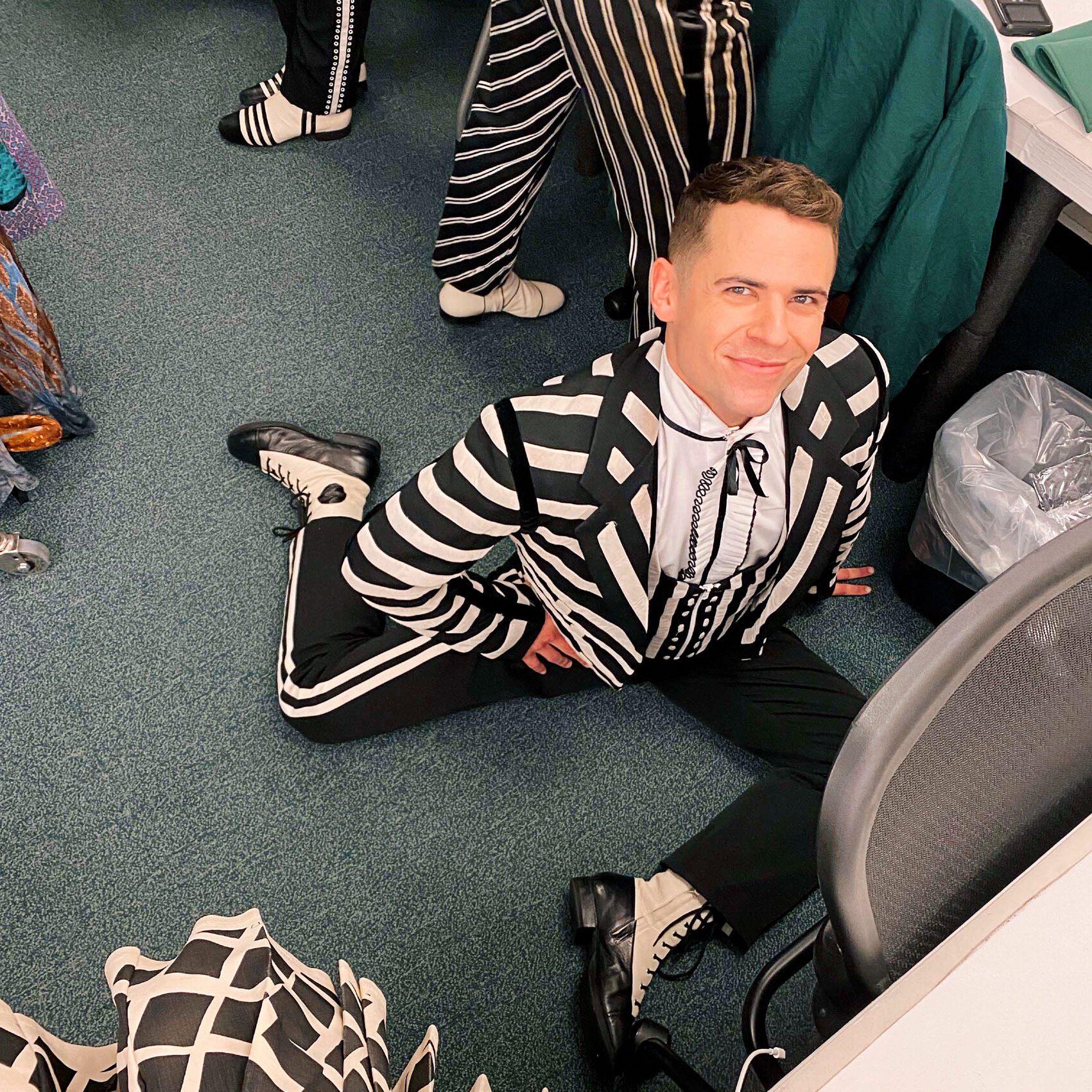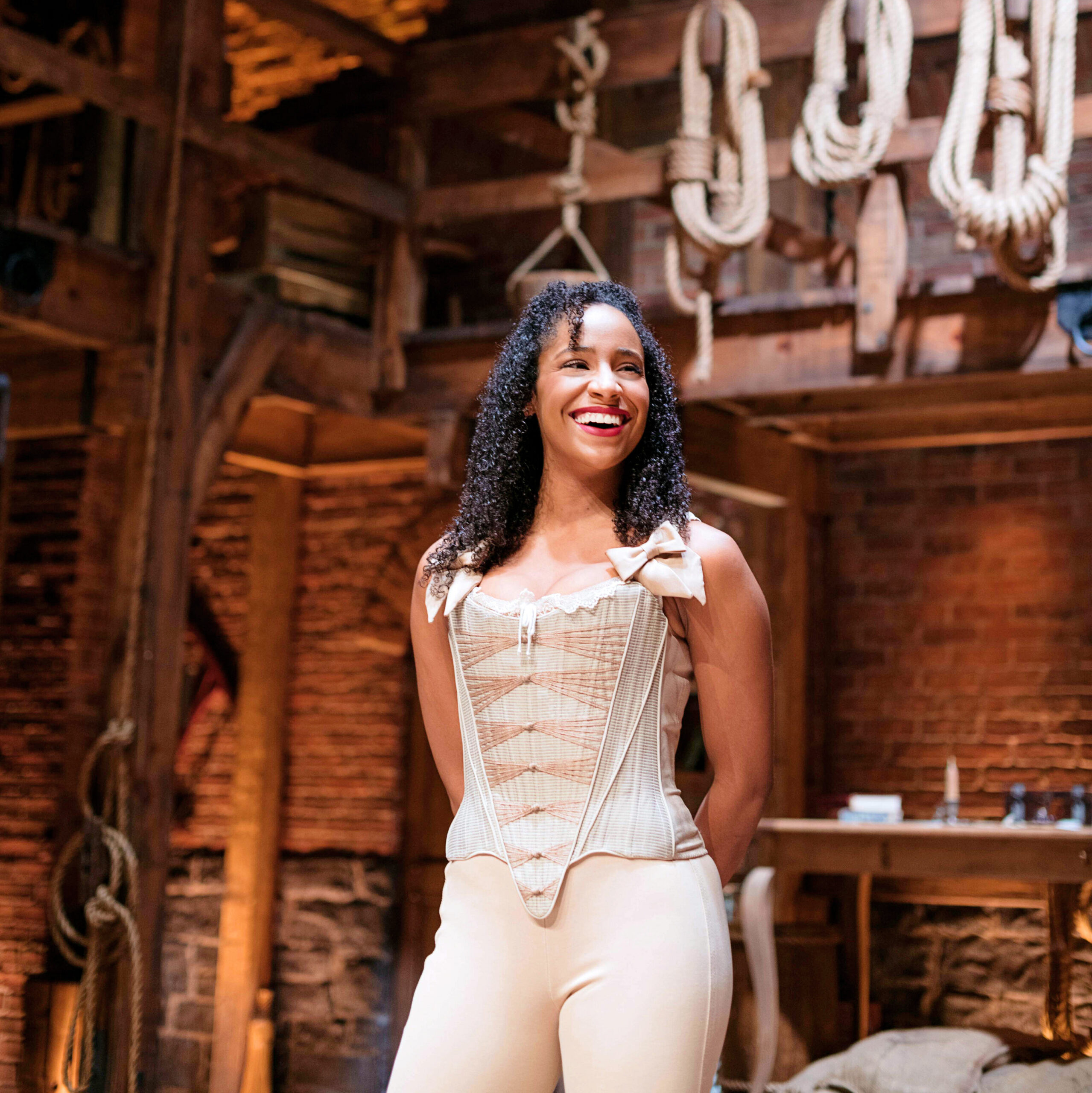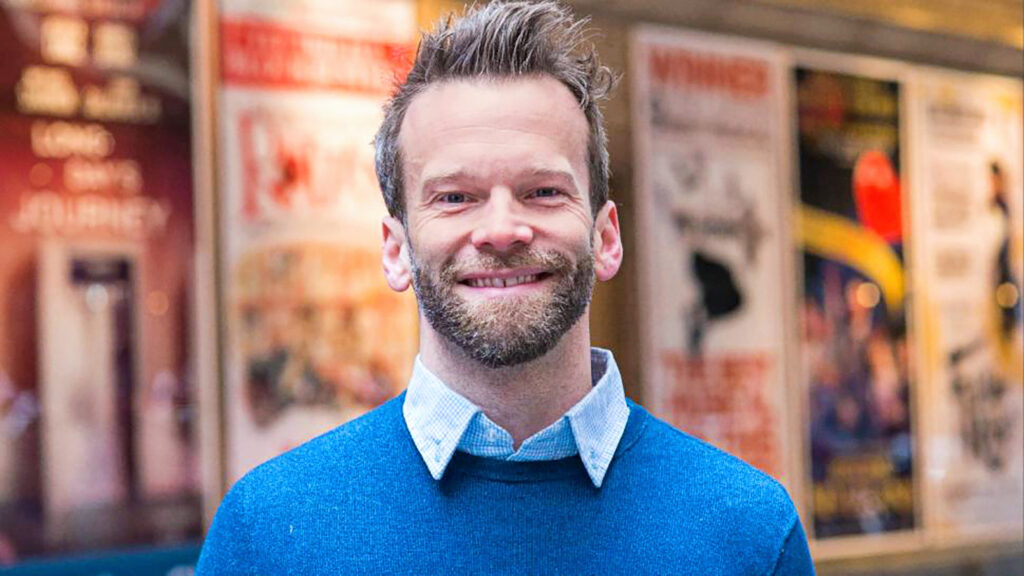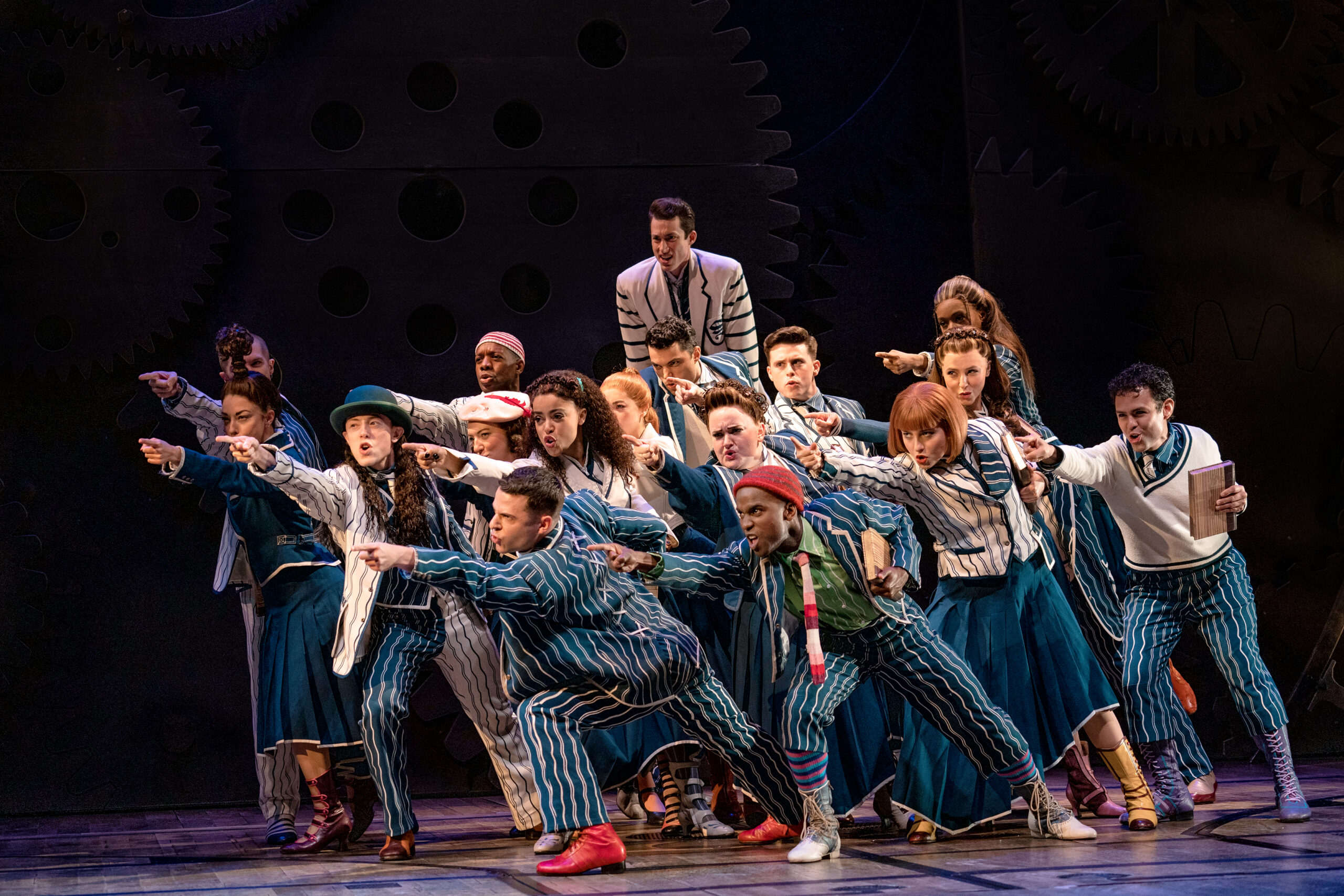3 Dancers Share Their Tips for Thriving in a Long-Running Show
As I run counterclockwise, my body naturally leans toward the left, hugging the curve. I put more weight into my left leg, firing up the outside of my left ankle to stabilize myself. Add momentum, upper-body choreography, hard-soled leather boots, a tightly packed stage of bodies and, of course, adrenaline, and the pressure on that left ankle to hold everything together amplifies. Now, imagine doing that almost 1,500 times.
I was a dancer in the 2015 Broadway revival of Fiddler on the Roof; it was a dream to dance Hofesh Shechter’s electrifying choreography. Within the show’s two biggest dance numbers, the ensemble ran those circles at least three times. Over the course of 465 performances, that added up. Despite top-notch physical therapy, the joint in my left ankle slowly started to develop tendinitis, and the intense effects of this long-lasting repetition became difficult to offset.
Dancing in a show with a long-term contract can be a blessing of stability in a business of quick gigs and frequent periods of unemployment, but it doesn’t come without its challenges. Performing the same steps day after day requires an intense combination of physical and mental endurance, and multiple years of repetition can take a toll. So how can artists make a long run sustainable? Three dancers and a physical therapist share their experiences navigating the energy output necessary for a high level of performance, the preservation of artistic integrity and the maintenance of a healthy, balanced instrument.
Maintenance Required
Chase Madigan has been performing the role of Chistery in Wicked since 2016, starting out on tour and eventually transferring into the Broadway company. As the “head monkey,” Chistery moves in a low, animalistic squat, often climbing and jumping around the set in the background when he’s not going full-out in the energetic dance numbers. To maintain the strength needed for such a role, Madigan has a rigorous wellness routine. Daily gym workouts and weekly physical therapy sessions are a necessity, and his personal before- and after-show tool kit includes foam rollers, heating pads, ice baths, using a Theragun and more. “There’s so much work involved in just maintaining my neutral state,” says Madigan. “The hardest thing is trying to train enough outside the theater to level out my body while at the same time saving enough energy to do the show at night.”

Madigan has also grown to realize how important it is to investigate the ways he can make reiterative movement feel fresh while simultaneously saving his body. “I always feel like there’s something I could do better or differently, or a new way I could push myself in the show,” he says. “But on the flip side, I’ve also learned the lesson of figuring out where I can pull back and still be giving a full performance. I have to find the right dynamics so that I’m always fully present, but I’m not killing myself in the shadows every night.”
Changing Your Mind
Justice Moore, who has played The Bullet track in the ensemble in multiple companies of Hamilton since 2016, finds the mental challenges of a long-running show as significant as the physical strain. “I like to constantly explore, grow and do new things,” she says. “When you’re in the same show for a long time, there can be a tendency to get stuck artistically. For a while, the hardest thing for me was finding a way to explore within material I’ve known for years, to not always let it sit so comfortably in my body and rely on muscle memory.” Moore appreciates that Hamilton as a show gives her brain a lot to play with. “There are so many floating, abstract ideas in Hamilton. There’s revolution, there’s pressure, there’s love,” she says. “I can focus on the intention and play with textures and dynamics inside the boundaries of what the choreographer has set.”

Lindsey Matheis, who danced in the immersive show Sleep No More for several years and recently transitioned into teaching its newest cohort, has also found ways to deal with the mental obstacles of repetition. “The most challenging part was the daily reinvigoration of passion and presence,” she says. “[At Sleep No More] there’s a huge culture of talking about scene work, hearing about what others have found, sharing different ideas or motivations to work with during the show. That always helped.” Matheis also tried to look at the work through a different lens each day: “One day I might do the show solely to meet eyes with a specific person, and one day I might focus on doing it because I know art is good for the community. The ability to zoom in and zoom out is helpful.”
When the repetition did feel particularly burdensome, the community she had formed within the workplace was her ultimate key to pushing through. “I think when human beings perceive their experience to be isolated and alone, that’s when more injury and more heartache can come up,” she says. “So especially on the hard days, it was another reason to connect with my company and circle up before the show to remember that we were all there together.”
A Flexible Approach
Although the steps in a long-running show stay the same, over time, individuals don’t. “We have to be respectful of the changes that are naturally happening in the life arc of our bodies, the different stages we can go through,” says Joseph Conger, PT, DPT, a physical therapist who works with Broadway casts and professional dance companies. Depending on the day or month or season, dancers may need different types of warm-ups and cross-training, and to approach the work onstage in different ways. “Sometimes there’s a need for more flexibility and mobility, other times more strength, or maybe there are hormonal or age-related changes happening,” says Conger.

Especially for dancers who are constantly repeating choreography, Conger sees pre- and postshow routines as a chance to create variety, rather than more repetition. He suggests starting with a heat-building warm-up of cardio, core and balance, and then working on a few particularly challenging tasks from the show. “What that is can change day to day,” he says. “But if you do a tricky double tour to the knee in the show, your warm-up shouldn’t be 10 double tours to the right and 10 to the left.”
Matheis has performed nine different tracks in Sleep No More, all of which required impeccable physical conditioning and stamina. As part of a regimen she’s crafted to maintain a balanced body, she’s a regular yoga practitioner, finding yoga’s linear, symmetrical movement patterns a nice contrast to the more abstract, circular choreography of the show.
Even with physical therapy and maintenance plans, dancing in long-running shows can lead to developing unintentional habits that, over time, erode the body’s alignment. Conger doesn’t often see big, traumatic injuries; instead, he mostly treats slow-building issues that evolve from repetition and overuse—tendinitis, especially in the feet and Achilles, knee and hip overuse injuries, and the development of hyper- or hypo-mobility in certain segments of the spine.
Time off can help, but usually only temporarily. Madigan’s tenure at Wicked was interrupted by two surgeries and a pandemic shutdown. When he came back to his role, the familiar aches quickly returned. Moore has experienced the same thing. She went on hiatus for a few months to do a different show last year. While she was on that other job, her usual injuries seemed to disappear, but when she resumed Hamilton, the old issues flared up.
Embracing Stability
There’s yet another factor that can come into play in a long-running show: Artists who stick with the same job for many years can be perceived as complacent. “Sometimes I feel an outside pressure from the industry to put more on my resumé,” says Madigan. And yet. After the pandemic, more dancers, myself included, are becoming better at tuning out the noise. It’s important to take time off when needed and to be unapologetic about leaning on the financial stability of a long-term contract. “I landed this gig where I have consistency, a paycheck every week, I love my cast, and I’m still really challenged,” continues Madigan. “So why would I leave if I’m happy? I just focus on what’s important to me that day and remember that everyone’s journey is different.”
6 Survival Tips
PT Joseph Conger on strategies for making it through a long run:

- Dancers who start with a non-dance-based warm-up tend to have fewer repetitive injuries than dancers who use a dance-based warm-up. So don’t be afraid to get creative, and remember that the first priority is to build actual heat in the body. Try starting with jumping jacks, mountain climbers, jogging around the stage and burpees.
- Don’t be afraid to add new things to your cross-training. Yoga and Pilates are great, but you can also try strength training or swimming.
- Don’t skip the cooldown! Even if you’re exhausted after the show, work some easy mobilizations and stretches into your postshow routine.
- Just five minutes of foam rolling can make all the difference.
- If you have PT exercises to do for an injury or misalignment, build them into your backstage track. If you’re offstage during a particular scene, keep a Theraband handy and sneak in two sets. Steal little moments when you can so it’s easier to accomplish the goal.
- Find a team of bodywork professionals whom you trust and feel comfortable with. Regular PT, massages and acupuncture are all good investments.




